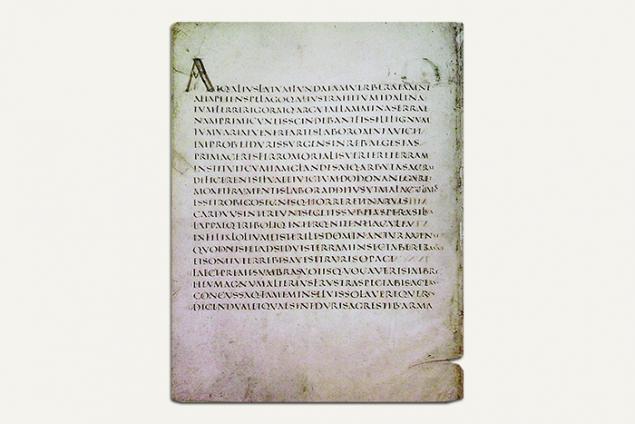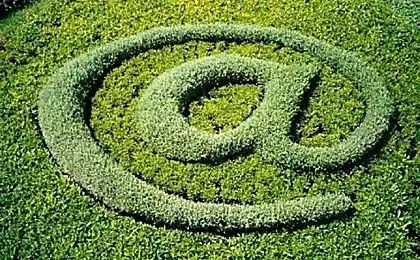538
To the last comma: how did the punctuation
Where, when and why did the modern punctuation marks? Blogger Kate Houston on the pages of BBC Culture traces the history of dots, commas and exclamation marks — from the library of Alexandria before the advent of the Emoji.
The first punctuation marks appeared in the III century BC and offered them to the Manager of the famous library of Alexandria, the Greek scholar Aristophanes. Prior to that, in the texts not only ignored by commas or dashes, but in capital letters or even gaps: much more in Ancient Greece and Rome valued well-prepared and persuasive speech. Also fluent sight-reading even in their native language then looked something incredible. Not delimited by anything words and sentences are merged in porridge, and unfamiliar with the text, the reader inevitably stopped and stammered.

Getty Images
Aristophanes suggested to use three symbols: a dot in the middle of the row (·), bottom (.) and at the top (·), which he called them with a comma ("comma"), a colon ("colon"), and periods ("periodos"). However, in fact it was probably not the punctuation, and comments to the texts — they told readers how long a pause to leave between words and sentences.
The Romans are not impressed by the innovation of Aristophanes, and therefore, from the beginning of their domination in the Mediterranean, the precursors of modern punctuation again disappeared from the manuscripts. Cicero, one of the most famous of the Roman orators, even said that the end of the offer must not be subject to any pause taken by the speaker, nor any symbol, supplied by the copyist, but only "to the demands of rhythm." Later, the Romans had experimented with the distinction between·words·points, but also without enthusiasm — in the second century of our era they have been cancelled. The cult of public speaking was too strong and say there speeches were delivered not at the paper, and studied the speakers by heart.
Punctuation is back to the books only with the arrival of Christian culture in the IV-V centuries of our era: if the Gentiles could transmit their traditions orally, then Christian culture books have become a Central part of her identity. The book of Psalms, the four Gospels — the word of God went around the world and actively were decorated with letters, intricate engravings and, of course, different characters.

page from the August Virgil, IV century
Christian writers began to use punctuation marks around the VI century to place in the texts of accents, helping to avoid ambiguities and misunderstandings of the readers. Still later, in the seventh century, Isidore of Seville, later canonized by the Catholic Church returned to the system of Aristophanes. The old the signs he gives new additional meanings. The lower the dot (.) now not only means a pause between words, but also receives grammatical functions first in the history of the comma, while the upper dot (·) indicates the end of the sentence.
Soon after, in the eighth century, there are spaces between words. They are administered by Irish and Scottish monks, tired to isolate individual words from the endless string of bad familiar Latin letters.
Since then, the points system proposed by Aristophanes, becomes in medieval Europe is widely recognized and is gradually developing. New signs come from musical notation, inspired by Gregorian chants. This is a punctus versus, suspending the proposal (the precursor to the modern semicolon), punctus elevatus, indicating changes in tone (in the letter it looked like an inverted semicolon, and eventually evolved into the modern colon) and punctus interrogatives used for the selection of exclamation and interrogative sentences (present exclamation mark appeared only in the XV century).
As a result, hristianskie point gradually began to degenerate. With the advent of more specific signs of the differences between them have become so thin that the authors got bored with these small, medium, and long pause. Now the point can be put anywhere in the text, and it meant something between a modern comma, semicolon, and, accordingly, point.Absolutely new system of punctuation in the XII century suggested Italian writer, Boncompagno Yes Signa. There were only two characters: slash (/) to indicate pauses, and dashes (—) to complete the sentences. And if the fate of the last misty — not the fact that he was the ancestor of the modern dash, the slash immediately became incredibly popular. Compact and well marked, it came to indicate pauses much better hristianskih commas.
Finally, the system of punctuation arose with the release of the first printed Bible: it's slash, Yes Boncompagno Signa fell down, got a tail and became the modern comma, in medieval semi-colon and the exclamation mark was joined by similar colon and question mark sign, and the Greek point finally found its rightful place in the end of the sentence. For writers this set was sufficient, and printing process recorded it as a standard for many centuries to come.
And only now, when the main method of transmission of information were no longer Newspapers with books, and the Internet, the system of punctuation has come to life again with the commas and dots scattered on the keyboard, abstract writer of the XV century still had it, but what to do with Emoji and emoticons? published
P. S. And remember, just changing your mind — together we change the world! ©
Join us in Facebook , Vkontakte, Odnoklassniki
Source: theoryandpractice.ru
The first punctuation marks appeared in the III century BC and offered them to the Manager of the famous library of Alexandria, the Greek scholar Aristophanes. Prior to that, in the texts not only ignored by commas or dashes, but in capital letters or even gaps: much more in Ancient Greece and Rome valued well-prepared and persuasive speech. Also fluent sight-reading even in their native language then looked something incredible. Not delimited by anything words and sentences are merged in porridge, and unfamiliar with the text, the reader inevitably stopped and stammered.

Getty Images
Aristophanes suggested to use three symbols: a dot in the middle of the row (·), bottom (.) and at the top (·), which he called them with a comma ("comma"), a colon ("colon"), and periods ("periodos"). However, in fact it was probably not the punctuation, and comments to the texts — they told readers how long a pause to leave between words and sentences.
The Romans are not impressed by the innovation of Aristophanes, and therefore, from the beginning of their domination in the Mediterranean, the precursors of modern punctuation again disappeared from the manuscripts. Cicero, one of the most famous of the Roman orators, even said that the end of the offer must not be subject to any pause taken by the speaker, nor any symbol, supplied by the copyist, but only "to the demands of rhythm." Later, the Romans had experimented with the distinction between·words·points, but also without enthusiasm — in the second century of our era they have been cancelled. The cult of public speaking was too strong and say there speeches were delivered not at the paper, and studied the speakers by heart.
Punctuation is back to the books only with the arrival of Christian culture in the IV-V centuries of our era: if the Gentiles could transmit their traditions orally, then Christian culture books have become a Central part of her identity. The book of Psalms, the four Gospels — the word of God went around the world and actively were decorated with letters, intricate engravings and, of course, different characters.

page from the August Virgil, IV century
Christian writers began to use punctuation marks around the VI century to place in the texts of accents, helping to avoid ambiguities and misunderstandings of the readers. Still later, in the seventh century, Isidore of Seville, later canonized by the Catholic Church returned to the system of Aristophanes. The old the signs he gives new additional meanings. The lower the dot (.) now not only means a pause between words, but also receives grammatical functions first in the history of the comma, while the upper dot (·) indicates the end of the sentence.
Soon after, in the eighth century, there are spaces between words. They are administered by Irish and Scottish monks, tired to isolate individual words from the endless string of bad familiar Latin letters.
Since then, the points system proposed by Aristophanes, becomes in medieval Europe is widely recognized and is gradually developing. New signs come from musical notation, inspired by Gregorian chants. This is a punctus versus, suspending the proposal (the precursor to the modern semicolon), punctus elevatus, indicating changes in tone (in the letter it looked like an inverted semicolon, and eventually evolved into the modern colon) and punctus interrogatives used for the selection of exclamation and interrogative sentences (present exclamation mark appeared only in the XV century).
As a result, hristianskie point gradually began to degenerate. With the advent of more specific signs of the differences between them have become so thin that the authors got bored with these small, medium, and long pause. Now the point can be put anywhere in the text, and it meant something between a modern comma, semicolon, and, accordingly, point.Absolutely new system of punctuation in the XII century suggested Italian writer, Boncompagno Yes Signa. There were only two characters: slash (/) to indicate pauses, and dashes (—) to complete the sentences. And if the fate of the last misty — not the fact that he was the ancestor of the modern dash, the slash immediately became incredibly popular. Compact and well marked, it came to indicate pauses much better hristianskih commas.
Finally, the system of punctuation arose with the release of the first printed Bible: it's slash, Yes Boncompagno Signa fell down, got a tail and became the modern comma, in medieval semi-colon and the exclamation mark was joined by similar colon and question mark sign, and the Greek point finally found its rightful place in the end of the sentence. For writers this set was sufficient, and printing process recorded it as a standard for many centuries to come.
And only now, when the main method of transmission of information were no longer Newspapers with books, and the Internet, the system of punctuation has come to life again with the commas and dots scattered on the keyboard, abstract writer of the XV century still had it, but what to do with Emoji and emoticons? published
P. S. And remember, just changing your mind — together we change the world! ©
Join us in Facebook , Vkontakte, Odnoklassniki
Source: theoryandpractice.ru























